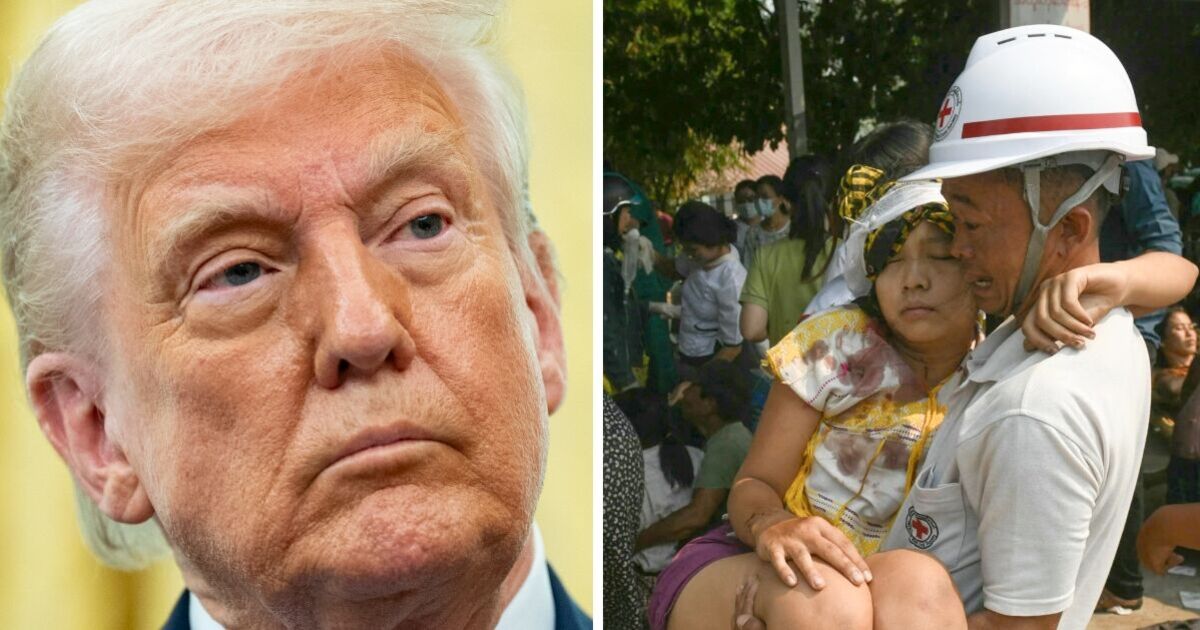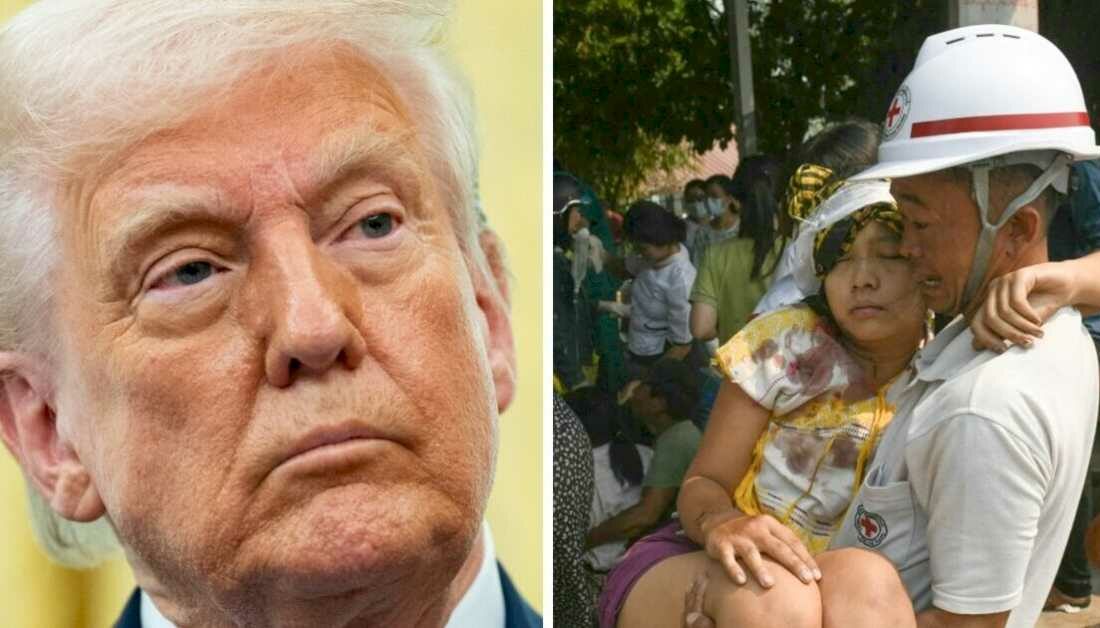
Myanmar’s earthquake is the first major natural disaster since Donald Trump cut the United States’ aid agency. The US President pledged help in response to the devastating quake on the same day the last staff were relieved of their duties at the US Agency for International Development (USAID).
The US State Department has said it is maintaining a team in Myanmar, but one former USAID official said the system is now “in shambles”, without the ability to carry out search and rescue operations or to move aid.
Sarah Charles, a former senior USAID official who oversaw disaster-response teams and overall humanitarian work under the Biden administration, said the system was without the people or resources to move quickly to pull out survivors from collapsed buildings and otherwise save lives.
Asked about the quake by reporters in Washington yesterday, Mr Trump said: “We’re going to be helping. We’ve already alerted the people. Yeah, it’s terrible what happened.”
State Department spokesperson Tammy Bruce told reporters the administration would use requests for help and reports from the region to shape its response.
She said: “USAID has maintained a team of disaster experts with the capacity to respond if disaster strikes. These expert teams provide immediate assistance, including food and safe drinking water, needed to save lives in the aftermath of a disaster.
Ms Bruce said despite the cuts “there has been no impact” on the “ability to perform those duties”.
Meanwhile, Myanmar’s military rulers have continued to bomb parts of the country despite the massive 7.7 magnitude earthquake which has killed over 1,600 people.
Pro-democracy rebel groups battling to oust the military from power have reported aerial bombings in Chang-U in the Sagaing region, which was at the epicentre of the quake.
There have also been reports of airstrikes near Myanmar’s border with Thailand, according to the BBC. Tom Andrews, the United Nation’s Special Rapporteur on human rights in Myanmar, told the broadcaster it was “nothing short of incredible” the military was dropping bombs amid rescue attempts.
He urged the junta to cease all military operations and for anyone with influence over Myanmar’s rulers to make it clear the bombings aren’t acceptable.
Dave Eubank is a former US Army Special Forces soldier who founded the Free Burma Rangers, a humanitarian aid organisation that has provided assistance to both combatants and civilians in Myanmar since the 1990s.
He said there were three airstrikes in northern Kayin state and southern Shan — both of which border Mandalay state.
Mr Eubank said in the area he was operating in, most villages had already been destroyed by the military so the earthquake had made little impact.
He said: “People are in the jungle and I was out in the jungle when the earthquake hit — it was powerful, but the trees just moved, that was it for us, so we haven’t had a direct impact other than that the Burma army keeps attacking, even after the quake.”
Mai Rukow, Editor of Shwe Phee Myay News Agency, said an airstrike on a rebel-controlled village in northern Shan just minutes after the earthquake killed seven militia members and damaged five buildings, including a school.
Myanmar, also known as Burma, is in the throes of a prolonged civil war, which is already responsible for a humanitarian crisis. It makes movement around the country both difficult and dangerous, complicating relief efforts and raising fears the death toll could still rise precipitously.
The country’s military seized power from the elected government of Aung San Suu Kyi in February 2021. It is now battling long-established militias and newly formed pro-democracy ones.
The military junta said on state TV on Saturday that the confirmed death toll from the earthquake rose to 1,644 as more bodies were pulled from the rubble of scores of buildings which collapsed when the quake struck near the country’s second-largest city on Friday (March 28). The number of injured increased to 3,408, while the missing figure rose to 139.
Rescue efforts are underway in major cities such as Mandalay and Naypyitaw, the capital. But even though teams and equipment have been flown in from other countries, they are hampered by airports in those cities being damaged and unfit to land planes.
Government forces have lost control of much of Myanmar and many places are too dangerous or impossible for aid groups to reach. More than three million people have been displaced by the fighting and nearly 20 million are in need, according to the United Nations.
China and Russia are the largest suppliers of weapons to Myanmar’s military and were among the first countries to step in with humanitarian aid.
Beijing said it has sent more than 135 rescue personnel and experts along with supplies such as medical kits and generators. Russia’s Emergencies Ministry said it had flown in 120 rescuers and supplies, and the country’s Health Ministry said Moscow had sent a medical team.
Other countries, including India and South Korea, are sending help. The UN has allocated £3.86million ($5m) towards relief efforts.
The earthquake struck at midday local time on Friday with an epicentre not far from Mandalay. It was followed by several aftershocks, including one measuring 6.4. It sent buildings in many areas toppling to the ground, buckled roads, caused bridges to collapse and burst a dam.
Earthquakes are relatively common in Myanmar as the country sits on the Sagaing Fault, a major north-south fault separating the India plate and the Sunda plate.

